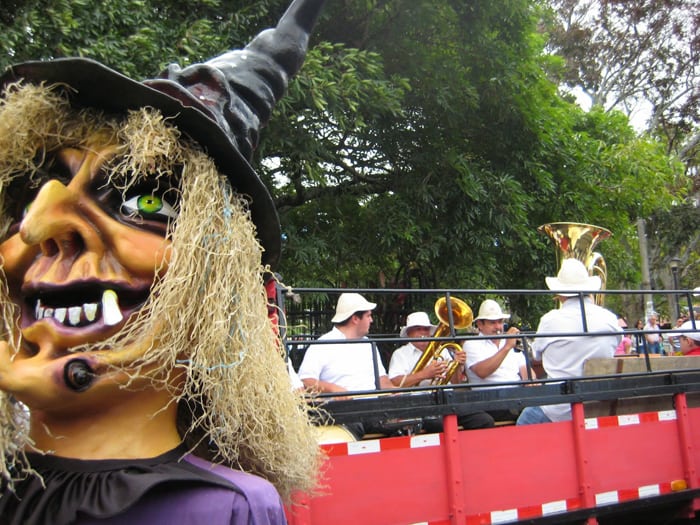On October 31, Costa Rica celebrates the National Day of the Traditional Costa Rican Masquerade. The celebration is even more special this year, as it also marks the recent declaration of the Traditional Masquerades as a National Symbol of Costa Rica.
The ‘Gigante’ (the giant) and the ‘Giganta’ (female giant), the ‘Witch,’ the ‘Devil,’ the ‘Skull,’ and the ‘Patas Arriba,’ are just some of the many traditional characters that make up the traditional masquerades that fill parks, squares, and streets with their joy, rhythm, and color.
The research “Mascaras, Mascaradas y Mascareros” by anthropologist Giselle Chang Vargas (2007), elaborated by the Center for Research and Conservation of Cultural Heritage, details that the origin of the masquerade in the Central Valley dates to the colonial period when communities organized festivities in honor of the Patron Saint.
“This traditional craft of the Central Valley was pioneered by Rafael ‘Lito’ Valerín, a native of Cartago, who created a series of popular characters at the dawn of the 20th century.
These clowns contributed to giving a playful character to the festivities in honor of the Virgin of Los Angeles and, later, were appropriated by the inhabitants of other localities of the region and became an attraction in the patron saint festivities of different towns of the Central Valley”, Chang’s publication summarizes.
Since 1996, on October 31, the “Costa Rican Traditional Masquerade Day” has been celebrated. Costa Rican masquerade craftsmanship, present in the different cultural activities, constitutes an essential element for the education and recreation of locals.
“In almost all the Central Valley, there have been families whose members have passed this knowledge along from one generation to another,” the research adds.
According to recent data based on cultural inventories, the practice of masquerade has also been registered in regions outside the Metropolitan Area, such as Santa Cruz de Guanacaste.
Several events have been organized to celebrate such a special day. For example, the Colegio Universitario de Cartago, with the support of the Ministry of Public Education, has announced multiple activities to be hosted on October 31 at Cartago’s Plaza Mayor from 9 a.m. to 5 p.m.
At Casa de la Cultura Alfredo González Flores, in Heredia, a collection of antique masks from the Museo de Cultura Popular will be on display. It will be shown until October 31, and admission is free.
Attending this event is a great way to learn about Costa Rican culture, delve into its rich history, and have a pleasant and lively time.






